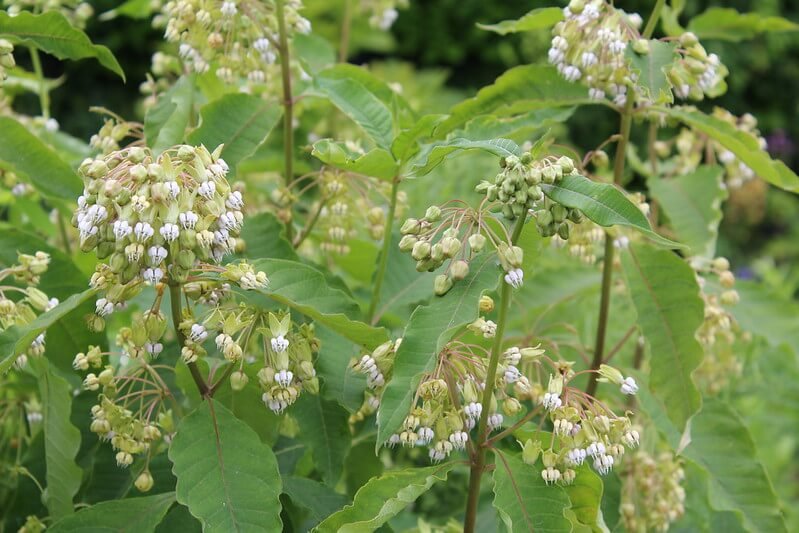Poke Milkweed
Milkweed that grows in the shade! Yes, please. It attracts bumble bees, butterflies, and is the host plant to the Monarch and 12 other species of butterflies and moths in the area (nwf.org). This long-lived species is not aggressive, but can sometimes hybridize with Common Milkweed when plants are located in very close proximity (Prairie Moon). This plant may take a season or two to establish, so give it some time.
Photo credit: Peganum
Milkweed that grows in the shade! Yes, please. It attracts bumble bees, butterflies, and is the host plant to the Monarch and 12 other species of butterflies and moths in the area (nwf.org). This long-lived species is not aggressive, but can sometimes hybridize with Common Milkweed when plants are located in very close proximity (Prairie Moon). This plant may take a season or two to establish, so give it some time.
Photo credit: Peganum
Milkweed that grows in the shade! Yes, please. It attracts bumble bees, butterflies, and is the host plant to the Monarch and 12 other species of butterflies and moths in the area (nwf.org). This long-lived species is not aggressive, but can sometimes hybridize with Common Milkweed when plants are located in very close proximity (Prairie Moon). This plant may take a season or two to establish, so give it some time.
Photo credit: Peganum
Life Cycle: Perennial
Sun Exposure: Partial, Shade
Soil Moisture: Medium-Wet, Medium, Medium-Dry
Height: 5 feet
Plant Spacing: 2-3 feet
Bloom Time: June-July
Bloom Color: White
Advantages: Pollinator Favorite, Deer Resistant
Host Plant: Monarch, Cecropia, and 11 other species of butterflies and moths use this as a caterpillar host plant in our area (nwf.org)





